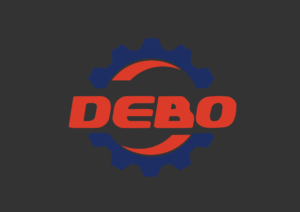Precision fasteners are critical components in mechanical equipment and engineering structures, and their quality directly affects the reliability and safety of the systems they are part of. In fastener manufacturing, electroplating is a common surface treatment technique. By creating a uniform coating on the fastener’s surface, electroplating enhances corrosion resistance, improves appearance, and optimizes mechanical performance. As one of the key German industrial standards, DIN 50960 plays an essential role in guiding the electroplating process for fasteners, ensuring the quality, uniformity, and durability of coatings. This article explores the application of DIN 50960 in electroplating for precision fasteners and its significance in improving product quality.
Ⅰ. Overview of DIN 50960 Standard
DIN 50960 is a crucial German industrial standard (DIN) that provides technical specifications, testing methods, and quality evaluation criteria for metal electroplating processes. The standard aims to ensure that the thickness, adhesion, uniformity, and corrosion resistance of coatings meet high-performance requirements, making them suitable for various application environments.
DIN 50960 is widely applied to the electroplating of metal components, including precision fasteners, across industries such as automotive, aerospace, construction, and industrial machinery. For precision fasteners, adherence to this standard ensures the stability of the coating's performance, extends service life, and improves assembly reliability.
Ⅱ. Key Requirements of DIN 50960 for Fastener Electroplating
1.Coating Thickness
Coating thickness is a fundamental factor influencing the performance of electroplating. DIN 50960 specifies the required coating thicknesses based on the operating environment and the functional requirements of the fasteners:
-
- Mild Corrosive Environments (e.g., indoor use): Thin coatings of 5-10μm are typically sufficient.
- Moderate Corrosive Environments (e.g., industrial settings): Coating thicknesses of 12-20μm provide better protection.
- Severe Corrosive Environments (e.g., marine or chemical facilities): Coating thicknesses exceeding 25μm are required to ensure long-term corrosion resistance.
The standard also emphasizes uniform coating thickness, particularly on complex geometries like threads, ensuring no significant deviations occur during the electroplating process.
2. Coating Adhesion
Adhesion between the coating and the substrate is a critical quality indicator. DIN 50960 specifies testing methods such as scratch tests and peel tests to verify adhesion strength. Adequate adhesion ensures that the coating does not peel or crack during operation, which is crucial for fasteners used in harsh environments.
3. Coating Uniformity
Uniformity is another essential requirement under DIN 50960. The coating must be evenly distributed across the fastener’s surface, including threaded areas, to avoid fitting issues caused by uneven thickness. Additionally, the standard specifies surface finish requirements, ensuring coatings are free from defects such as bubbles, pinholes, or burn marks.
4. Corrosion Resistance
DIN 50960 emphasizes verifying the corrosion resistance of coatings through tests such as salt spray testing (ASTM B117). These tests simulate corrosive environments to evaluate the durability of the coating over specific durations. For instance, 48-hour salt spray tests may suffice for general industrial environments, while 96-hour or longer tests are required for more extreme conditions.
5. Environmental and Process Requirements
The standard also addresses environmental concerns during the electroplating process. DIN 50960 encourages minimizing the use of harmful substances in plating solutions and ensures that waste disposal complies with environmental regulations. This approach not only helps protect the environment but also enhances the sustainability of manufacturing processes.
Ⅲ. Practical Applications of DIN 50960 in Fastener Electroplating
- Application in the Automotive Industry
In the automotive sector, fasteners are often exposed to high humidity, vibrations, and temperature fluctuations. The DIN 50960 standard ensures the quality of electroplated coatings, optimizing their thickness and uniformity to improve the reliability of fasteners under extreme conditions. For example, bolts and nuts used in chassis and engine components must meet the standard’s stringent requirements for corrosion resistance and durability. - Application in Aerospace
The aerospace industry demands lightweight, high-strength, and long-lasting fasteners. DIN 50960 provides strict controls over coating uniformity and adhesion to ensure that fasteners perform reliably in extreme environments such as high altitudes, low temperatures, and high pressures. Additionally, the standard’s focus on environmental compliance supports the aerospace industry’s commitment to green manufacturing. - Application in Construction and Engineering
In construction and engineering projects, fasteners are frequently exposed to environmental factors like rain, wind, and chemical corrosion. DIN 50960 ensures the long-term performance of fasteners in these challenging conditions by specifying suitable coating standards. For instance, fasteners used in bridges or marine structures undergo salt spray testing to validate their corrosion resistance over extended periods.
Ⅳ. Advantages of DIN 50960 Standard
- Improved Product Consistency and Interchangeability
By adhering to DIN 50960, manufacturers can ensure consistent electroplating quality across production batches, enhancing product interchangeability and reducing assembly issues caused by variations in coating quality. - Enhanced Product Durability
The comprehensive requirements for coating thickness, uniformity, and adhesion significantly improve the service life of fasteners, especially their corrosion resistance in harsh environments. - Global Market Competitiveness
As an internationally recognized standard, DIN 50960 enables manufacturers to meet the expectations of global customers, particularly in European and North American markets, thereby enhancing their competitiveness. - Support for Green Manufacturing
DIN 50960 promotes environmental sustainability by emphasizing eco-friendly practices in the electroplating process, such as reducing harmful substances and ensuring proper waste management.
Ⅴ. Conclusion
DIN 50960 serves as a critical guide for electroplating processes in precision fastener manufacturing. By standardizing technical requirements and testing methods, it ensures that coatings meet high-performance standards, improving the durability and reliability of fasteners. As industrial technology advances and environmental regulations tighten, DIN 50960 will continue to play an increasingly important role in the fastener industry, promoting higher quality and greener manufacturing practices. For manufacturers, mastering and adhering to this standard is key to enhancing product competitiveness and meeting the demands of international markets.


